- Clone
- MEC13.3 (See other available formats)
- Regulatory Status
- RUO
- Other Names
- PECAM-1, EndoCAM
- Isotype
- Rat IgG2a, κ
- Ave. Rating
- Submit a Review
- Product Citations
- publications
CD31 is a 130-140 kD glycoprotein, also known as platelet endothelial cell adhesion molecule (PECAM-1), EndoCAM, and gpIIa. It is a member of the Ig superfamily, expressed on endothelial cells, platelets, granulocytes, monocytes/macrophages, dendritic cells, and T and B cell subsets, and is critical for cell-to-cell interactions. The primary ligands for CD31 have been reported to be CD38 and the vitronectin receptor (αv β3 integrin, CD51/CD61). Other reported functions of CD31 are neutrophil emigration to sites of inflammation, and angiogenesis.
Product DetailsProduct Details
- Verified Reactivity
- Mouse
- Antibody Type
- Monoclonal
- Host Species
- Rat
- Immunogen
- Polyoma middle T transformed EC line tEnd.1
- Formulation
- Phosphate-buffered solution, pH 7.2, containing 0.09% sodium azide
- Preparation
- The antibody was purified by affinity chromatography and conjugated with Spark Red™ 718 under optimal conditions.
- Concentration
- 0.2 mg/mL
- Storage & Handling
- The antibody solution should be stored undiluted between 2°C and 8°C, and protected from prolonged exposure to light. Do not freeze.
- Application
-
FC
- Recommended Usage
-
Flexi-Fluors™ are provided at a standard 0.2 mg/mL concentration. We recommend titrating this reagent to determine the optimal concentration for each application. For many flow cytometry applications, conjugated antibodies perform well at concentrations ranging from 0.03 to 1.0 µg per million cells in 100 µL. We recommend testing a range of concentrations starting from 10 µg/mL.
For example, make five 1:1 serial dilutions of the 0.2 mg/mL antibody. Add 5 µL of each dilution (including the undiluted antibody) to 100 µL of cells (at 107 cells/mL) to test six concentrations -- 1.0, 0.5, 0.25, 0.125, 0.06, and 0.03 µg per million cells in 100 µL volume. Compare staining patterns or create a titration curve using the MFI or staining index to determine the optimal concentration.
* Spark Red™ 718 has a maximum excitation of 697 nm and a maximum emission of 711 nm. - Excitation Laser
-
Red Laser (633 nm)
- Application Notes
-
Anti-mouse CD31 clones 390 and MEC13.3 bind to their respective non-overlapping epitopes in IgD2 of CD31.8 Additional reported applications (in the relevant formats) include: immunoprecipitation1, in vitro and in vivo blocking of CD31-mediated cell-cell interactions1-4, immunohistochemical staining1,5,6 of acetone-fixed frozen sections and zinc-fixed paraffin-embedded sections, and spatial biology (IBEX)12,13.
Special Note: The antibody works well on acetone-fixed frozen sections as well as Zinc-fixed paraffin-embedded sections. It sometime works on formalin-fixed and paraformaldehyde-fixed paraffin-embedded tissue sections but inconsistent results have been reported. This antibody is not recommended for formalin-fixed paraffin-embedded sections or for Western blot analysis. The Ultra-LEAF™ Purified antibody (Endotoxin < 0.01 EU/µg, Azide-Free, 0.2 µm filtered) is recommended for functional assays (Cat. No. 102529 and 102530). - Additional Product Notes
-
For more information about Flexi-Fluors™, visit our Flexi-Fluor™ page and review FAQs associated with this product line.
-
Application References
(PubMed link indicates BioLegend citation) -
- Vecchi A, et al. 1994. Eur. J. Cell Biol. 63:247. (IP, IHC, Block)
- Christofidou-Solomidou M, et al. 1997. J. Immunol. 158:4872. (Block)
- DeLisser HM, et al. 1997. Am. J. Pathol. 151:671. (Block)
- Rosenblum WI, et al. 1994. Am. J. Pathol. 145:33. (Block)
- Baldwin HS, et al. 1994. Development 120:2539. (IHC)
- Voswinckel R, et al. 2003. Circ. Res. 93:372. (IHC)
- Leung VW, et al. 2009. Am J. Pathol. 175:1757. PubMed
- Chacko AM, et al. 2012. PLoS One 7:e34958.
- Giacomini C, et al. 2014. Exp Eye Res. 18:1. PubMed
- Morita R, et al. 2015. PNAS. 112:160. PubMed
- Ito A, et al. 2015. Brain Res. 1594:310. PubMed
- Radtke AJ, et al. 2020. Proc Natl Acad Sci U S A. 117:33455-65. (SB) PubMed
- Radtke AJ, et al. 2022. Nat Protoc. 17:378-401. (SB) PubMed
- RRID
-
AB_3106343 (BioLegend Cat. No. 285088)
Antigen Details
- Structure
- Ig superfamily, 130-140 kD
- Distribution
-
Endothelial cells, platelets, granulocytes, monocytes/macrophages, dendritic cells, T and B cell subsets
- Function
- Adhesion
- Ligand/Receptor
- CD38, αV/β3 integrin
- Cell Type
- B cells, Dendritic cells, Endothelial cells, Granulocytes, Macrophages, Monocytes, Neutrophils, Platelets, T cells
- Biology Area
- Angiogenesis, Cell Adhesion, Cell Biology, Immunology, Neuroinflammation, Neuroscience
- Molecular Family
- Adhesion Molecules, CD Molecules
- Antigen References
-
1. Barclay AN, et al. 1997. The Leukocyte Antigen FactsBook Academic Press.
2. DeLisser HM, et al. 1994. Immunol. Today 15:490.
3. Newman PJ, et al. 1990. Science 247:1219. - Gene ID
- 18613 View all products for this Gene ID
- UniProt
- View information about CD31 on UniProt.org
Related FAQs
- What are Flexi-Fluors?
-
Flexi-Fluors are rapidly made-to-order conjugated antibodies. The technology, manufacturing processes, and specifications used to create Flexi-Fluors are the same as our regular catalog products. However, the optimal concentration and performance of each Flexi-Fluor must be determined by the customer.
- How quickly will I receive my order?
-
We aim to ship Flexi-Fluors within 2-3 weeks of receipt of your order. However, depending on your location, shipping times may vary.
- How are Flexi-Fluors different from regular catalog products?
-
Flexi-Fluors are made on demand, specifically for you. Flexi-Fluors are manufactured using the same high-quality standards, and specifications as other catalog products. For faster delivery, Flexi-Fluors are not tested by flow cytometry to determine optimal concentrations or evaluate performance. This testing needs to be performed by the customer.
- How do I determine the optimal concentration for using my Flexi-Fluor? How should I titrate my antibody?
-
Flexi-Fluors are provided at a standard 0.2 mg/mL concentration. We recommend that you titrate your antibody to determine the optimal concentration to use for your application. For many flow cytometry applications, conjugated antibodies perform well at concentrations ranging from 0.03 to 1.0 µg per million cells in 100 µL volume. We recommend that you test a range of concentrations starting from 10 µg/mL.
For example, make five 1:1 serial dilutions of your 0.2 mg/mL antibody. Add 5 µL of each dilution (including the undiluted antibody) to 100 µL of cells (at 107 cells/ml) to test six concentrations - 1.0, 0.5, 0.25, 0.125, 0.06, and 0.03 µg per million cells in 100 µL volume. Compare staining patterns or create a titration curve using the MFI or staining index to determine the optimal concentration.
- I can’t find the antibody-dye combination that I need. When will it be available?
-
We continuously update our catalog, introducing scores of new products every month. Please get in touch with our Technical Service team for an update on new products or recommendations for suitable alternatives to complete your panel. Or contact Custom Solutions to inquire about our affordable custom conjugation services.
- I need help to validate the performance of my Flexi-Fluor. Who should I contact?
-
Please get in touch with Technical Service for assistance.
- Can I order more than 50 μg of a Flexi-Fluor?
-
Yes, you can order multiple vials of the same Flexi-Fluor products. We cannot guarantee, however, that these vials will be bottled from the same lot. For bulk single-lot orders, contact our Custom Solutions team.
- What is the expiration date of my Flexi-Fluor?
-
Expiration dates can be found on the vial label or by using our CoA lookup tool.
Other Formats
View All CD31 Reagents Request Custom Conjugation| Description | Clone | Applications |
|---|---|---|
| APC anti-mouse CD31 | MEC13.3 | FC |
| Biotin anti-mouse CD31 | MEC13.3 | FC |
| FITC anti-mouse CD31 | MEC13.3 | FC |
| PE anti-mouse CD31 | MEC13.3 | FC |
| Purified anti-mouse CD31 | MEC13.3 | FC,IP,Block,IHC-F |
| Alexa Fluor® 488 anti-mouse CD31 | MEC13.3 | FC |
| Alexa Fluor® 647 anti-mouse CD31 | MEC13.3 | FC,3D IHC,SB |
| Alexa Fluor® 594 anti-mouse CD31 | MEC13.3 | IHC-F,FC,3D IHC,SB |
| PerCP/Cyanine5.5 anti-mouse CD31 | MEC13.3 | FC |
| PE/Cyanine7 anti-mouse CD31 | MEC13.3 | FC |
| PE/Dazzle™ 594 anti-mouse CD31 | MEC13.3 | FC |
| APC/Fire™ 750 anti-mouse CD31 | MEC13.3 | FC |
| Ultra-LEAF™ Purified anti-mouse CD31 | MEC13.3 | FC,IP,Block,IHC-F |
| APC/Cyanine7 anti-mouse CD31 | MEC13.3 | FC |
| Spark YG™ 570 anti-mouse CD31 | MEC13.3 | IHC-F |
| Spark Red™ 718 anti-mouse CD31 (Flexi-Fluor™) | MEC13.3 | FC |
Compare Data Across All Formats
This data display is provided for general comparisons between formats.
Your actual data may vary due to variations in samples, target cells, instruments and their settings, staining conditions, and other factors.
If you need assistance with selecting the best format contact our expert technical support team.
-
APC anti-mouse CD31
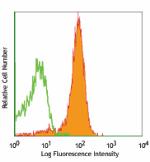
C57BL/6 splenocytes stained with MEC13.3 APC -
Biotin anti-mouse CD31

C57BL/6 mouse splenocytes stained with biotinylated MEC13.3,... -
FITC anti-mouse CD31
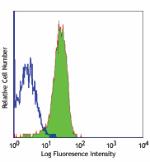
C57BL/6 mouse splenocytes stained with MEC13.3 FITC -
PE anti-mouse CD31
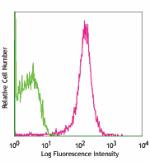
C57BL/6 mouse splenocytes stained with MEC13. 3 PE -
Purified anti-mouse CD31

C57BL/6 mouse splenocytes stained with purified MEC13.3, fol... -
Alexa Fluor® 488 anti-mouse CD31
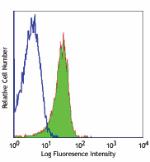
C57BL/6 mouse splenocytes stained with MEC13.3 Alexa Fluor® ... -
Alexa Fluor® 647 anti-mouse CD31

C57BL/6 mouse splenocytes stained with MEC13.3 Alexa Fluor® ... 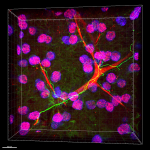
Formalin-fixed, 300 micron-thick mouse kidney section was bl... 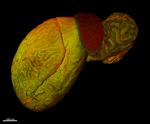
In-vivo mouse testis labeling of blood vessels with Alexa Fl... 
Paraformaldehyde-fixed (4%), 500 μm-thick mouse kidney secti... 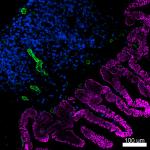
Confocal image of C57BL/6 mouse small intestine sample acqui... 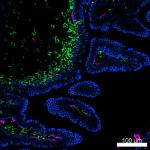
Confocal image of C57BL/6 mouse small intestine sample acqui... -
Alexa Fluor® 594 anti-mouse CD31

C57BL/6 mouse splenocytes were stained with CD31 (clone MEC1... 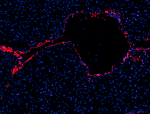
C57BL/6 mouse frozen liver section was fixed with 4% parafor... 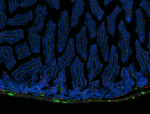
Dissected C57/B6 mouse stomach was immersed in 4% paraforma... 
Paraformaldehyde-fixed (4%), 500 μm-thick mouse kidney secti... 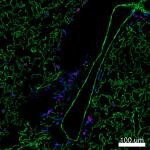
Confocal image of C57BL/6 mouse lung sample acquired using t... 
Confocal image of C57BL/6 mouse lung sample acquired using t... -
PerCP/Cyanine5.5 anti-mouse CD31

C57BL/6 mouse splenocytes were stained with CD31 (clone MEC1... -
PE/Cyanine7 anti-mouse CD31

C57BL/6 mouse splenocytes were stained with CD31 (clone MEC1... -
PE/Dazzle™ 594 anti-mouse CD31
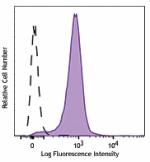
MEC13dot3_PEDZZL594_CD31_Antibody_040517 -
APC/Fire™ 750 anti-mouse CD31
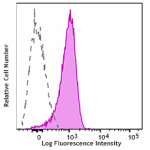
C57BL/6 were stained with CD31 (clone MEC13.3) APC/Fire™ 750... -
Ultra-LEAF™ Purified anti-mouse CD31
-
APC/Cyanine7 anti-mouse CD31

C57BL/6 mouse splenocytes were stained with CD31 (clone MEC1... -
Spark YG™ 570 anti-mouse CD31
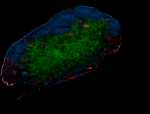
C57BL/6 mouse frozen lymph node section was fixed with 4% pa... -
Spark Red™ 718 anti-mouse CD31 (Flexi-Fluor™)
 Login / Register
Login / Register 













Follow Us